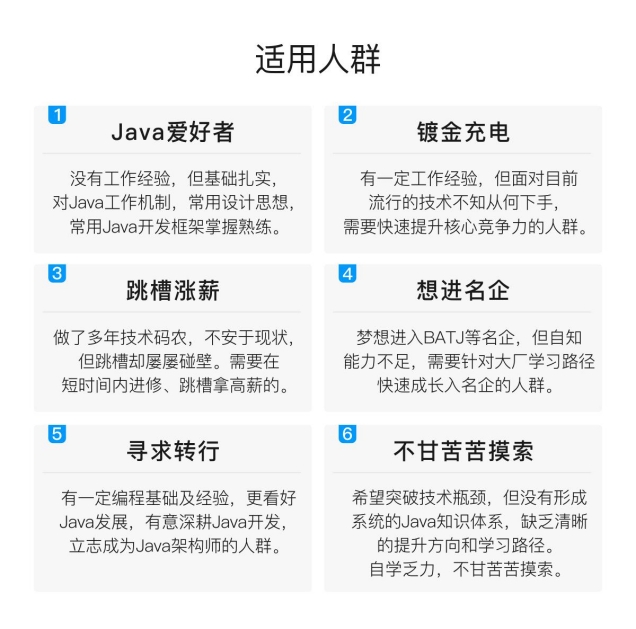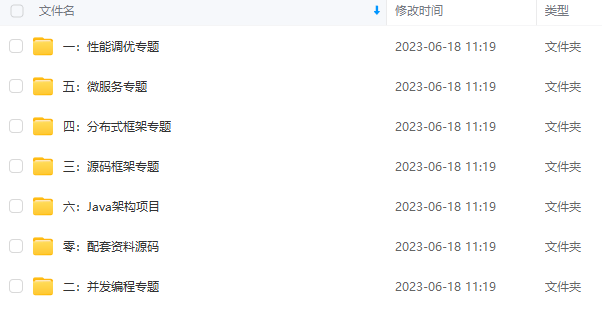在 SpringMVC 中,大致的异常解析器就是这些,接下来我们来逐个学习这些异常解析器。
2.AbstractHandlerExceptionResolver
AbstractHandlerExceptionResolver 是真正干活的异常解析器的父类,我们就先从他的 resolveException 方法开始看起。
@Override
@Nullable
public ModelAndView resolveException(HttpServletRequest request, HttpServletResponse response, @Nullable Object handler, Exception ex) {
if (shouldApplyTo(request, handler)) {
prepareResponse(ex, response);
ModelAndView result = doResolveException(request, response, handler, ex);
if (result != null) {
logException(ex, request);
}
return result;
}
else {
return null;
}
}
-
首先调用 shouldApplyTo 方法判断当前解析器是否可以处理传入的处理器所抛出的异常,如果不支持,则直接返回 null,这个异常将交给下一个 HandlerExceptionResolver 去处理。
-
调用 prepareResponse 方法处理 response。
-
调用 doResolveException 方法实际处理异常,这是一个模版方法,具体的实现在子类中。
-
调用 logException 方法记录异常日志信息。
记录异常日志没啥好说的,doResolveException 则是一个空的模版方法,所以这里对我们来说主要就是两个方法:shouldApplyTo 和 prepareResponse,我们分别来看。
shouldApplyTo
protected boolean shouldApplyTo(HttpServletRequest request, @Nullable Object handler) {
if (handler != null) {
if (this.mappedHandlers != null && this.mappedHandlers.contains(handler)) {
return true;
}
if (this.mappedHandlerClasses != null) {
for (Class<?> handlerClass : this.mappedHandlerClasses) {
if (handlerClass.isInstance(handler)) {
return true;
}
}
}
}
return !hasHandlerMappings();
}
这里涉及到了两个对象:mappedHandlers 和 mappedHandlerClasses:
-
mappedHandlers:存储的是处理器对象(Controller 或者 Controller 中的方法)
-
mappedHandlerClasses:存储的是处理器的 Class。
我们在配置异常解析器的时候可以配置这两个对象,进而实现该异常处理器只为某一个处理器服务,但是一般来说没这种需求,所以大家仅做了解即可。
如果开发者一开始配置了 mappedHandlers 或者 mappedHandlerClasses,则用这两个和处理器去比较,否则就直接返回 true,表示支持该异常处理。
prepareResponse
prepareResponse 方法比较简单,主要是处理一下响应头的缓存字段。
protected void prepareResponse(Exception ex, HttpServletResponse response) {
if (this.preventResponseCaching) {
preventCaching(response);
}
}
protected void preventCaching(HttpServletResponse response) {
response.addHeader(HEADER_CACHE_CONTROL, “no-store”);
}
这是 AbstractHandlerExceptionResolver 的大致内容,可以看到还是非常 easy 的,接下来我们来看它的实现类。
2.1 AbstractHandlerMethodExceptionResolver
AbstractHandlerMethodExceptionResolver 主要是重写了 shouldApplyTo 方法和 doResolveException 方法,一个一个来看。
shouldApplyTo
@Override
protected boolean shouldApplyTo(HttpServletRequest request, @Nullable Object handler) {
if (handler == null) {
return super.shouldApplyTo(request, null);
}
else if (handler instanceof HandlerMethod) {
HandlerMethod handlerMethod = (HandlerMethod) handler;
handler = handlerMethod.getBean();
return super.shouldApplyTo(request, handler);
}
else if (hasGlobalExceptionHandlers() && hasHandlerMappings()) {
return super.shouldApplyTo(request, handler);
}
else {
return false;
}
}
这块感觉没啥好说的,判断逻辑基本上都还是调用父类的 shouldApplyTo 方法去处理。
doResolveException
@Override
@Nullable
protected final ModelAndView doResolveException(
HttpServletRequest request, HttpServletResponse response, @Nullable Object handler, Exception ex) {
HandlerMethod handlerMethod = (handler instanceof HandlerMethod ? (HandlerMethod) handler : null);
return doResolveHandlerMethodException(request, response, handlerMethod, ex);
}
@Nullable
protected abstract ModelAndView doResolveHandlerMethodException(
HttpServletRequest request, HttpServletResponse response, @Nullable HandlerMethod handlerMethod, Exception ex);
doResolveException 是具体的异常处理方法,但是它里边却没有实质性操作,具体的事情交给 doResolveHandlerMethodException 方法去做了,而该方法是一个抽象方法,具体的实现在子类中。
2.1.1 ExceptionHandlerExceptionResolver
AbstractHandlerMethodExceptionResolver 只有一个子类就是 ExceptionHandlerExceptionResolver,来看下它的 doResolveHandlerMethodException 方法:
@Override
@Nullable
protected ModelAndView doResolveHandlerMethodException(HttpServletRequest request,
HttpServletResponse response, @Nullable HandlerMethod handlerMethod, Exception exception) {
ServletInvocableHandlerMethod exceptionHandlerMethod = getExceptionHandlerMethod(handlerMethod, exception);
if (exceptionHandlerMethod == null) {
return null;
}
if (this.argumentResolvers != null) {
exceptionHandlerMethod.setHandlerMethodArgumentResolvers(this.argumentResolvers);
}
if (this.returnValueHandlers != null) {
exceptionHandlerMethod.setHandlerMethodReturnValueHandlers(this.returnValueHandlers);
}
ServletWebRequest webRequest = new ServletWebRequest(request, response);
ModelAndViewContainer mavContainer = new ModelAndViewContainer();
ArrayList exceptions = new ArrayList<>();
try {
if (logger.isDebugEnabled()) {
logger.debug("Using @ExceptionHandler " + exceptionHandlerMethod);
}
// Expose causes as provided arguments as well
Throwable exToExpose = exception;
while (exToExpose != null) {
exceptions.add(exToExpose);
Throwable cause = exToExpose.getCause();
exToExpose = (cause != exToExpose ? cause : null);
}
Object[] arguments = new Object[exceptions.size() + 1];
exceptions.toArray(arguments); // efficient arraycopy call in ArrayList
arguments[arguments.length - 1] = handlerMethod;
exceptionHandlerMethod.invokeAndHandle(webRequest, mavContainer, arguments);
}
catch (Throwable invocationEx) {
// Any other than the original exception (or a cause) is unintended here,
// probably an accident (e.g. failed assertion or the like).
if (!exceptions.contains(invocationEx) && logger.isWarnEnabled()) {
logger.warn("Failure in @ExceptionHandler " + exceptionHandlerMethod, invocationEx);
}
// Continue with default processing of the original exception…
return null;
}
if (mavContainer.isRequestHandled()) {
return new ModelAndView();
}
else {
ModelMap model = mavContainer.getModel();
HttpStatus status = mavContainer.getStatus();
ModelAndView mav = new ModelAndView(mavContainer.getViewName(), model, status);
mav.setViewName(mavContainer.getViewName());
if (!mavContainer.isViewReference()) {
mav.setView((View) mavContainer.getView());
}
if (model instanceof RedirectAttributes) {
Map<String, ?> flashAttributes = ((RedirectAttributes) model).getFlashAttributes();
RequestContextUtils.getOutputFlashMap(request).putAll(flashAttributes);
}
return mav;
}
}
这个方法虽然比较长,但是很好理解:
-
首先查找到带有
@ExceptionHandler注解的方法,封装成一个 ServletInvocableHandlerMethod 对象(关于 ServletInvocableHandlerMethod 对象,松哥在之前的文章中已经介绍过了,具体参见:Spring Boot 定义接口的方法是否可以声明为 private?)。 -
如果找到了对应的方法,则为 exceptionHandlerMethod 配置参数解析器、视图解析器等,关于这些解析器,参考松哥之前的文章:SpringBoot 中如何自定义参数解析器?、深入分析 SpringMVC 参数解析器、Spring Boot 中如何统一 API 接口响应格式?。
-
接下来定义一个 exceptions 数组,如果发生的异常存在异常链,则将整个异常链存入 exceptions 数组中。
-
exceptions 数组再加上 handlerMethod,共同组成方法参数,调用
exceptionHandlerMethod.invokeAndHandle完成自定义异常方法的执行,执行结果被保存再 mavContainer 中。 -
如果请求到此结束,则直接构造一个 ModelAndView 返回。
-
否则从 mavContainer 中取出各项信息,构建新的 ModelAndView 返回。同时,如果存在重定向参数,也将之保存下来(关于重定向参数,参见:SpringMVC 中的参数还能这么传递?涨姿势了!)。
这就是 ExceptionHandlerExceptionResolver 的大致工作流程,可以看到,还是非常 easy 的。
2.2 DefaultHandlerExceptionResolver
这个看名字就知道是一个默认的异常处理器,用来处理一些常见的异常类型,我们来看一下它的 doResolveException 方法:
@Override
@Nullable
protected ModelAndView doResolveException(
HttpServletRequest request, HttpServletResponse response, @Nullable Object handler, Exception ex) {
try {
if (ex instanceof HttpRequestMethodNotSupportedException) {
return handleHttpRequestMethodNotSupported(
(HttpRequestMethodNotSupportedException) ex, request, response, handler);
}
else if (ex instanceof HttpMediaTypeNotSupportedException) {
return handleHttpMediaTypeNotSupported(
(HttpMediaTypeNotSupportedException) ex, request, response, handler);
}
else if (ex instanceof HttpMediaTypeNotAcceptableException) {
return handleHttpMediaTypeNotAcceptable(
(HttpMediaTypeNotAcceptableException) ex, request, response, handler);
}
else if (ex instanceof MissingPathVariableException) {
return handleMissingPathVariable(
(MissingPathVariableException) ex, request, response, handler);
}
else if (ex instanceof MissingServletRequestParameterException) {
return handleMissingServletRequestParameter(
(MissingServletRequestParameterException) ex, request, response, handler);
}
else if (ex instanceof ServletRequestBindingException) {
return handleServletRequestBindingException(
(ServletRequestBindingException) ex, request, response, handler);
}
else if (ex instanceof ConversionNotSupportedException) {
return handleConversionNotSupported(
(ConversionNotSupportedException) ex, request, response, handler);
}
else if (ex instanceof TypeMismatchException) {
return handleTypeMismatch(
(TypeMismatchException) ex, request, response, handler);
}
else if (ex instanceof HttpMessageNotReadableException) {
return handleHttpMessageNotReadable(
(HttpMessageNotReadableException) ex, request, response, handler);
}
else if (ex instanceof HttpMessageNotWritableException) {
return handleHttpMessageNotWritable(
(HttpMessageNotWritableException) ex, request, response, handler);
小编13年上海交大毕业,曾经在小公司待过,也去过华为、OPPO等大厂,18年进入阿里一直到现在。
深知大多数初中级Java工程师,想要提升技能,往往是自己摸索成长,但自己不成体系的自学效果低效又漫长,而且极易碰到天花板技术停滞不前!
因此收集整理了一份《2024年最新Java开发全套学习资料》送给大家,初衷也很简单,就是希望能够帮助到想自学提升又不知道该从何学起的朋友,同时减轻大家的负担。



由于文件比较大,这里只是将部分目录截图出来,每个节点里面都包含大厂面经、学习笔记、源码讲义、实战项目、讲解视频
如果你觉得这些内容对你有帮助,可以添加下面V无偿领取!(备注Java)

, request, response, handler);
小编13年上海交大毕业,曾经在小公司待过,也去过华为、OPPO等大厂,18年进入阿里一直到现在。
深知大多数初中级Java工程师,想要提升技能,往往是自己摸索成长,但自己不成体系的自学效果低效又漫长,而且极易碰到天花板技术停滞不前!
因此收集整理了一份《2024年最新Java开发全套学习资料》送给大家,初衷也很简单,就是希望能够帮助到想自学提升又不知道该从何学起的朋友,同时减轻大家的负担。
[外链图片转存中…(img-NeirfA45-1710892589694)]
[外链图片转存中…(img-CCAeSIFC-1710892589695)]
[外链图片转存中…(img-15uej8XB-1710892589695)]
由于文件比较大,这里只是将部分目录截图出来,每个节点里面都包含大厂面经、学习笔记、源码讲义、实战项目、讲解视频
如果你觉得这些内容对你有帮助,可以添加下面V无偿领取!(备注Java)
[外链图片转存中…(img-2Woz38WR-1710892589696)]






















 2万+
2万+











 被折叠的 条评论
为什么被折叠?
被折叠的 条评论
为什么被折叠?








